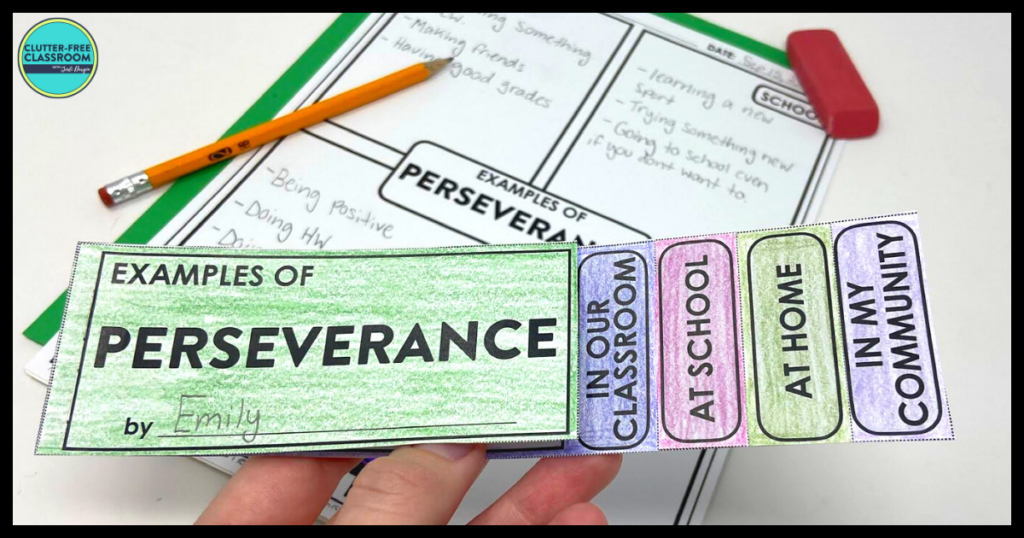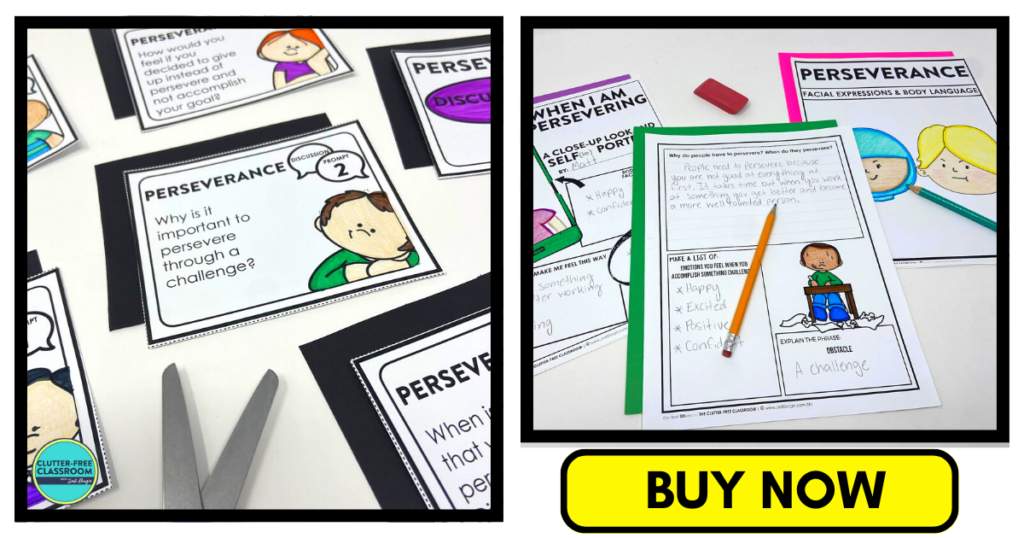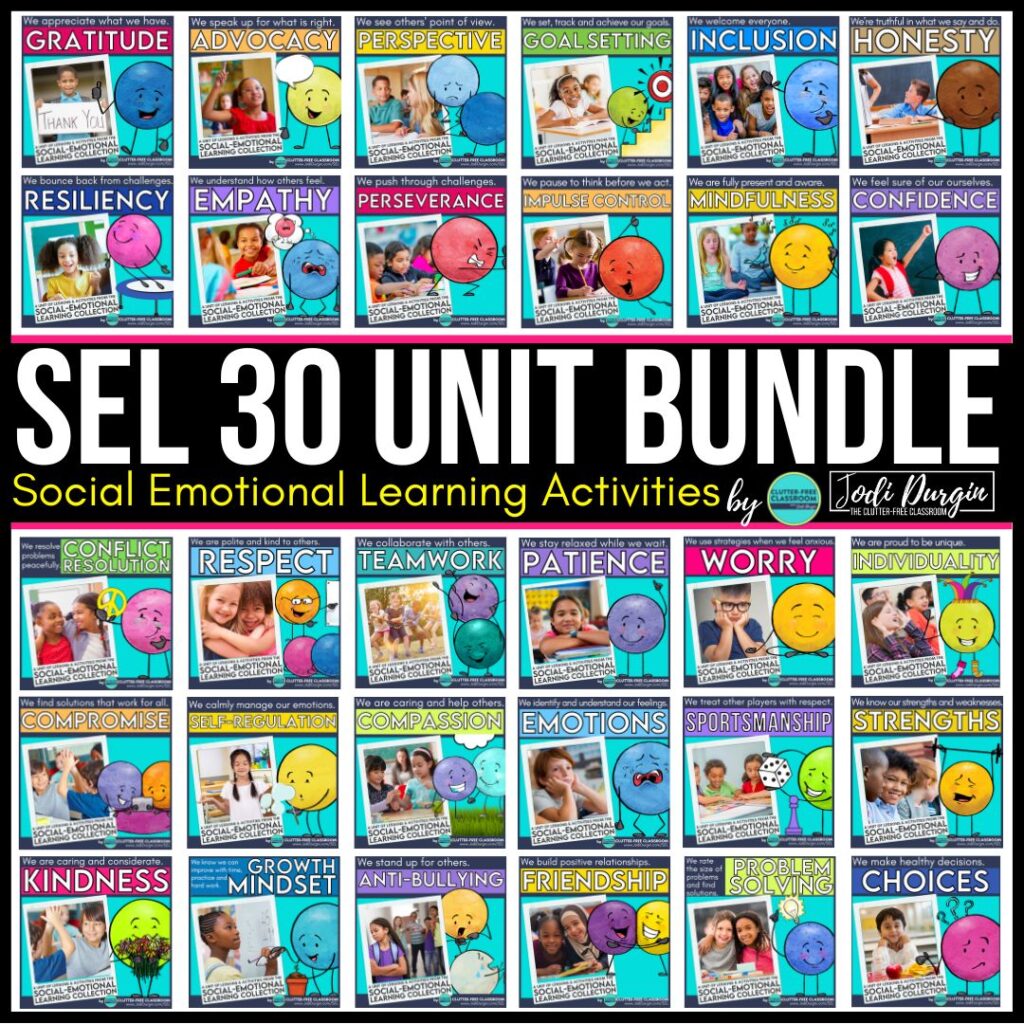If you are an elementary teacher looking to learn how to help your students persevere through challenges, then you found the right place! Perseverance skills prepare kids to face dilemmas and solve problems. Students who can persevere are more independent than students who cannot. In this post, we’ll go into detail about what perseverance is and why it’s important. In addition, we’ll share tips and ideas for how to teach perseverance skills to elementary students in a classroom setting. Read all about helping students persevere through challenges in and out of the classroom below!

What Does Perseverance Mean?
Perseverance is persistence in doing something difficult despite challenges or delays in reaching success. People who persevere are able to achieve challenging goals and stay motivated towards achieving them.
Why is it Important for Kids to Have Perseverance Skills?
It is important for kids to have perseverance skills because challenges are consistently a part of life. Kids who can persevere will have the skills they need to face difficult situations without becoming discouraged and shutting down.


How Do I Know If I Need to Teach Perseverance in My Classroom?
The students in your 1st, 2nd, 3rd, 4th or 5th grade classroom would benefit from perseverance lessons and activities if any of these statements are true:
- Students come to you to solve any problem that they experience.
- Students shy away from challenging work.
- They have a hard time completing tasks.
- Students are afraid of failure.
- Students frequently say “I can’t do it.”

5 Reasons To Promote Perseverance In Your Elementary Classroom
Below are 5 reasons to promote perseverance in your elementary classroom.
1. Perseverance helps students set and achieve goals
Perseverance helps students set goals for themselves and work towards achieving their goals. Students will achieve more goals when they learn to persevere because they will work through obstacles. Students will also learn to achieve long term goals that require more perseverance than short term goals.
2. Shows students that failure is okay
Perseverance teaches students that failure is okay and can be expected when trying something new. It teaches students that failure is a good thing and provides you with an opportunity to try a different approach. With failure, students can use perseverance and this leads to new learning.

3. Helps students develop a growth mindset
Developing perseverance helps students develop a growth mindset. They will change their thinking from “I can’t do this” to “I can’t do this yet.” Instead of giving up when they have an obstacle, they will push through the obstacle and think about what the obstacle is teaching them.
4. Perseverance helps students manage their emotions
Learning perseverance helps students manage their emotions when they are struggling with different tasks. Students will learn to expect the struggle and learn strategies for coping without losing control of themselves. Students could learn strategies like taking a break, deep breathing and using a fidget.
5. Perseverance prompts independence
As students gain perseverance skills they will become more independent because they will be looking inward to solve their problems instead of immediately going to adults. Perseverance will help students work independently when they come to challenging problems or are working on a project. Instead of going to an adult to ask if their work is okay, students will look towards themselves to examine their work and progress.

5 Tips and Ideas for Teaching Perseverance
Read below for tips and ideas for how to teach perseverance to elementary students.
1. Read Aloud Picture Books about Perseverance
Picture books are a great way to introduce and teach an SEL topic. It gets students thinking about the topic and activating their background knowledge. Check out this list of picture books for teaching perseverance!
2. Watch Videos about Perseverance
There are tons of free online videos out there that promote social emotional learning. It’s a fun and engaging way to teach SEL skills that your students will enjoy. Check out these videos for teaching perseverance!

3. Explicitly Teach Vocabulary Related to Perseverance
Vocabulary words can help students develop understanding of perseverance and create connections through related words. Our perseverance SEL unit includes ten vocabulary cards with words related to the SEL topic. It is important for students to be able to see, hear, and use relevant vocabulary while learning. One idea for how to use them is to create an SEL word wall as students learn the words.
4. Provide Practice Opportunities
When learning any skill, students need time to practice. Social emotional learning skills are no different! Our perseverance SEL unit includes scenario cards, discussion cards, choice boards, games, and much more. These provide students with opportunities to practice the skills independently, with partners or small groups, or as a whole class.
5. Integrate Other Content Areas
Integrating other content areas with this topic is a great way to approach this SEL topic. Our perseverance SEL unit includes reading, writing, and art activities.


Skills Related to Perseverance
Perseverance, in the context of social emotional learning (SEL) or character education, refers to the quality of persistence, determination, and steadfastness in the face of challenges, obstacles, or setbacks. While “perseverance” is the commonly used term, there are other words and phrases that can convey a similar meaning. These alternative words highlight different aspects of resilience, tenacity, and the willingness to keep going. Here are some other words used in the context of perseverance:
- Persistence: Continuing to pursue goals or objectives with determination, despite difficulties or obstacles.
- Resilience: Bouncing back from challenges, setbacks, or failures and maintaining a positive mindset.
- Grit: Displaying a combination of passion, perseverance, and stamina in the pursuit of long-term goals.
- Tenacity: Demonstrating unwavering determination, resolve, and persistence in the face of adversity.
- Fortitude: Exhibiting mental and emotional strength, courage, and endurance during difficult circumstances.
- Steadfastness: Remaining committed and resolute in the pursuit of goals, even in the face of challenges or discouragement.
- Endurance: Sustaining effort and energy over a prolonged period, especially when faced with difficulty or fatigue.
- Stick-to-itiveness: Showing dedication and commitment to tasks or goals, persevering through difficulties.
- Dedication: Devoting oneself wholeheartedly to a cause, task, or goal, demonstrating sustained effort and commitment.
- Determination: Having a strong sense of resolve, purpose, and the will to continue pursuing objectives despite obstacles.
These terms encompass the concept of perseverance and reflect the qualities of persistence, resilience, and determination within the context of social emotional learning (SEL) or character education.
Download the SEL Activities
Click an image below to either get this individual perseverance unit or get ALL 30 SEL units!
In closing, we hope you found this information about how to teach perseverance to elementary students helpful! If you did, then you may also be interested in these posts.







